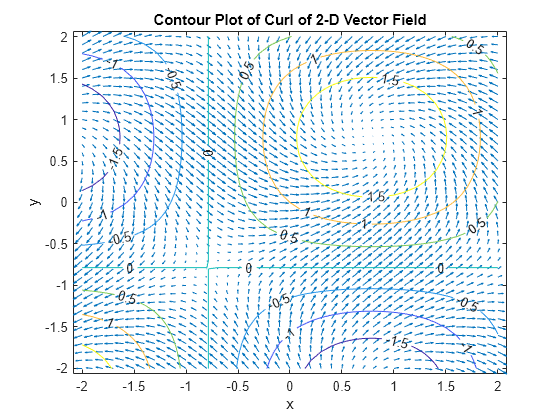curl
Curl of symbolic vector field
Syntax
Description
c = curl(V)V with respect to a default vector constructed
from the symbolic variables in V.
Examples
Input Arguments
Limitations
The
curlfunction does not support tensor derivatives. If the inputVis a tensor field or a matrix rather than a vector, then thecurlfunction returns an error.Symbolic Math Toolbox™ currently does not support the
dotorcrossfunctions for symbolic matrix variables and functions of typesymmatrixandsymfunmatrix. If vector calculus identities involve dot or cross products, then the toolbox displays those identities in terms of other supported functions instead. To see a list of all the functions that support symbolic matrix variables and functions, use the commandsmethods symmatrixandmethods symfunmatrix.
More About
Version History
Introduced in R2012aSee Also
diff | divergence | gradient | jacobian | hessian | laplacian | potential | vectorPotential
